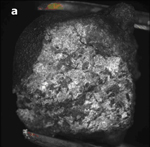This season’s annual scientific balloon campaign, which is held by NSF and NASA, will conduct varied experiments using ultra-sophisticated instrumentation.
NASA and the National Science Foundation launched a scientific balloon on Monday, December 20, Eastern Standard time, to study the effects of cosmic rays on Earth. It was the first of five scientific balloons scheduled to launch from Antarctica in December.
The Cosmic Ray Energetics And Mass (CREAM VI) experiment was designed and built at the University of Maryland. CREAM is investigating high-energy cosmic-ray particles that originated from distant supernovae explosions in the Milky Way and reached Earth. Currently, CREAM VI is floating 126,000 ft above Antarctica with nominal science operations. (more…)
Read More

